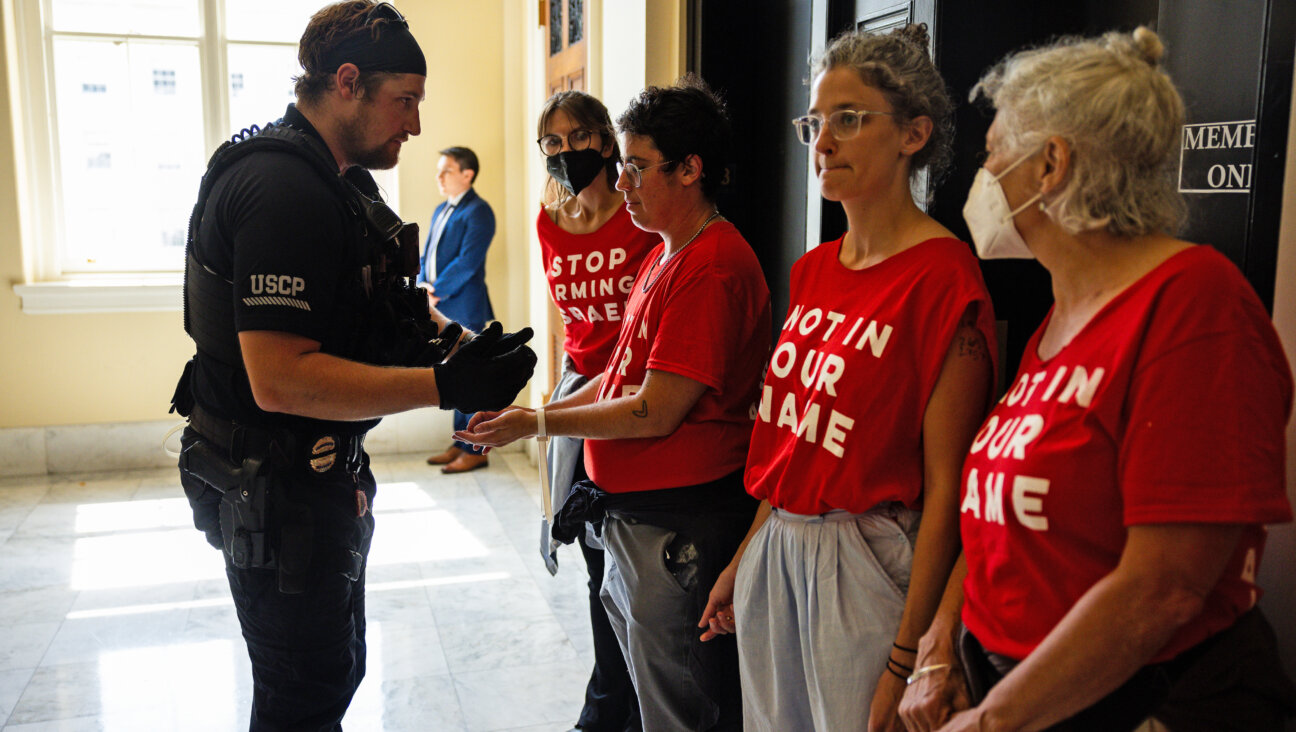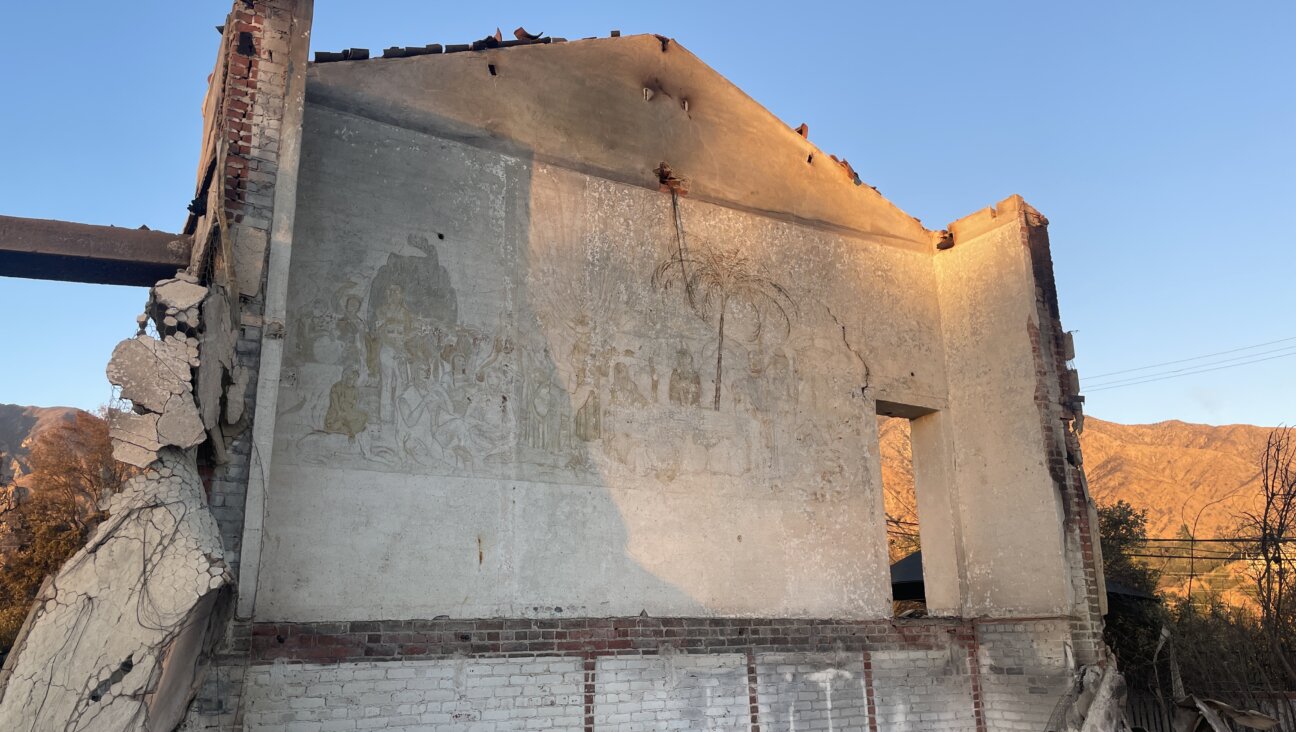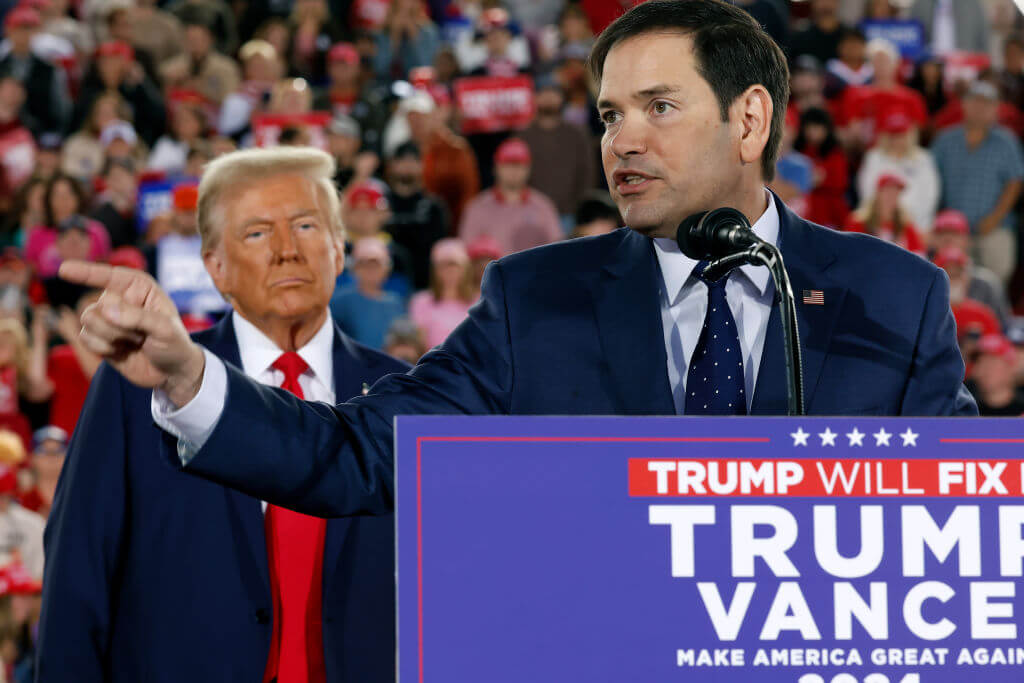Nelson Mandela, Iconic Leader for Jews of South Africa — and World

Unique Bond: Jewish South Africans played an outsized role in Nelson Mandela?s life, especially his early rise to political prominence. They will surely join a heartbroken world in mourning his death. Image by Getty Images
Nelson Mandela, who died December 5, has become a beloved icon for all of South Africa, and no less for its Jewish community. But until he became the first democratically elected president of South Africa, he had had no formal relationship with its organized Jewish community. That was because the formal structures of the community had not taken any firm public steps to oppose apartheid.
From Mandela’s first days as a young lawyer, however, individual Jews played a significant role in his career. The first was an attorney, Lazar Sidelsky, who in 1942, flouting the customs of the time, accepted the young Mandela as a law clerk at his Johannesburg firm. In his autobiography, “Long Walk to Freedom,” Mandela said, “It was a Jewish firm, and in my experience I have found Jews to be more broad-minded than most whites on issues of race and politics, perhaps because they themselves have historically been victims of prejudice.” Not long before Sidelsky’s death, almost 60 years later, at the age of 90, Mandela, in a typically thoughtful gesture, invited his former boss to a lunch at his Johannesburg home.
During the apartheid years, there were nonobservant Jews who assumed leadership roles in the South African Communist Party and who were among the few white South Africans who treated their fellow blacks with dignity and as equals. In consequence, many of them paid the price of social ostracism, imprisonment and exile. Among a number of them were Solly Sachs (the father of Justice Albie Sachs); Albie Sachs himself; Joe Slovo, who subsequently became minister of housing in President Mandela’s Cabinet, and Gill Marcus (whose father had been, for many years, the London bookkeeper of the exiled African National Congress), who became a deputy minister of finance in the Mandela Cabinet and is today the governor of the South African Reserve Bank.
When Mandela faced long “treason” trials in the 1950s and ’60s, two of his leading counsel were Jewish — Israel “Issy“ Maisels, then a pre-eminent Jewish leader, and Arthur Chaskalson, whom Mandela appointed in 1994 to head the new Constitutional Court of South Africa. Mandela’s friendship with Helen Suzman, the leading anti-apartheid member of the South African Parliament for many years, was an intimate and affectionate one.
And then there was his rabbi. Cyril Harris was the revered chief rabbi of South Africa from 1987 to 2004. At the joyous induction of Mandela as president in May 1994, Harris delivered a moving address. A close friendship between them developed, and Mandela frequently referred to Harris as “my rabbi.” As such, he invited him to give a Hebrew blessing to his marriage, on his 80th birthday, to Graça Machel. At Harris’s funeral in Jerusalem, the South African ambassador was present and spoke warmly of “our rabbi.”
Mandela’s relationship with Israel was a difficult one. For decades during the apartheid era, the Palestine Liberation Organization had built a close relationship with the ANC and for some years had helped train members of its military wing. At the same time, Mandela sympathized with Israel and the aspirations of the Jewish people to live there in peace with their Arab neighbors.
From 1992 to 1994, Alon Liel was Israel’s ambassador to South Africa. During that crucial period, South Africa’s leaders were in the throes of negotiations for a peaceful resolution of what appeared to be intractable barriers preventing a transition to democracy. Soon after his arrival in the country, Liel met with Mandela; a warm friendship developed between them. There were some in Israel and in the South African Jewish community who were critical of Mandela for his close ties with Yasser Arafat and with a PLO that at the time refused to recognize Israel’s right to exist.
From 1991 to 1994, I led the “Goldstone Commission,” which had been appointed by all the parties to the South African peace negotiations to investigate the causes of political violence in the country. I was in regular touch with Mandela, and on a few occasions we had discussed the possibility of him visiting Israel. While expressing keen interest in doing so, he made it clear to me that he would not be willing unless he could, on the same visit, travel to the West Bank and meet with the Palestinian leaders. The violence that was at that time accompanying the first intifada made this prospect unlikely.
One evening, some weeks later, he called me at home to inform me enthusiastically that, given the lull in the Middle East violence, he had just agreed in the coming months to visit Israel and the West Bank. He expressed his excitement at the prospect and looked forward to meeting with Israeli and Palestinian leaders. As soon as we had ended our conversation I called Liel to express my delight. He was surprised that I had any knowledge of the visit, and said that he had received Mandela’s agreement only a few minutes earlier.
It was a matter of great regret to many in Israel and the South African Jewish community that further outbreaks of violence caused the visit to be canceled. I know that this was also to his regret. It was only some years later, in October 1999, that Mandela, who at that time was no longer president, visited Israel and the West Bank. Leaders of the South African Jewish community joined him in Israel. When he greeted Harris, he said, “Now I feel at home — my rabbi is here.”
During his presidency of South Africa, Mandela had a warm relationship with the leaders of the Jewish community and spoke regularly at the opening ceremonies of the South African Jewish Board of Deputies. In 2000 he officially opened the South African Jewish Museum, in Cape Town.
Richard Goldstone is a former South African judge and prosecutor. He served as chief prosecutor for the United Nations International Criminal Tribunal for the former Yugoslavia.
















